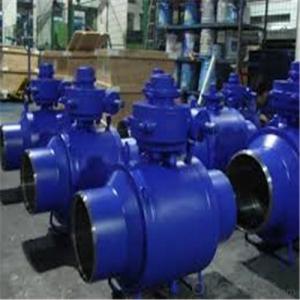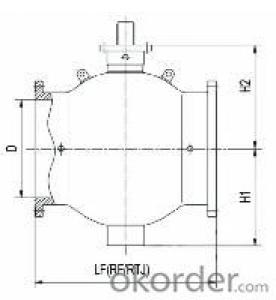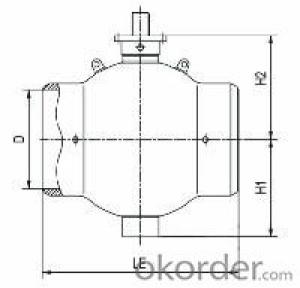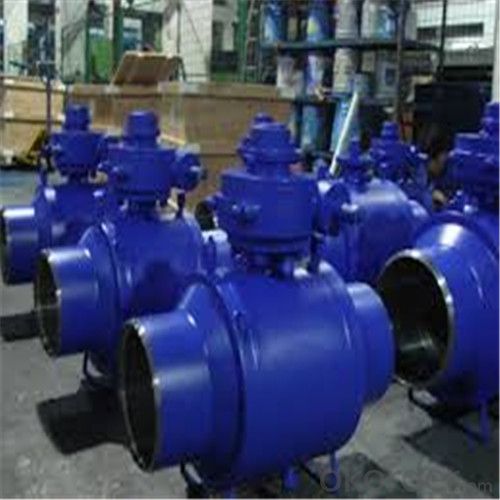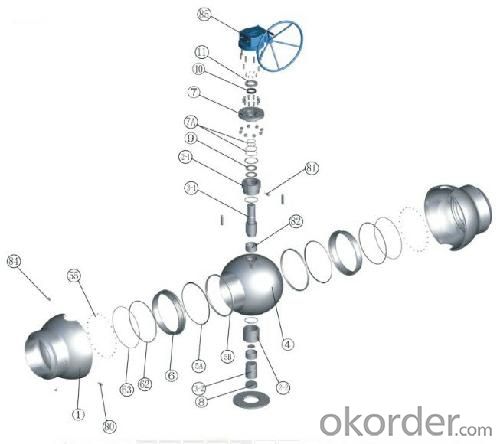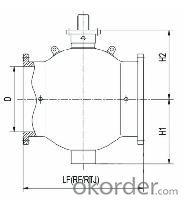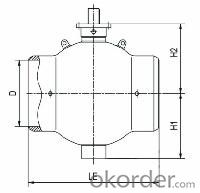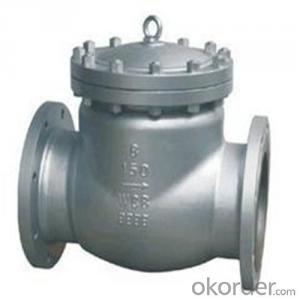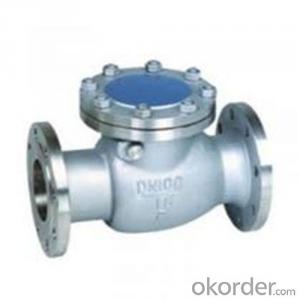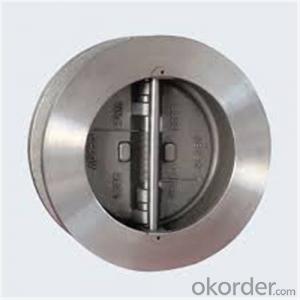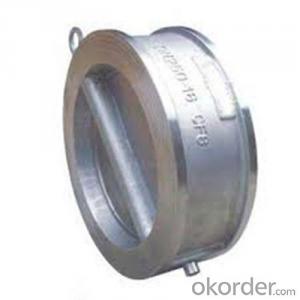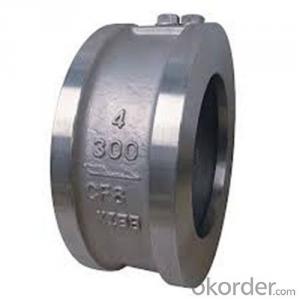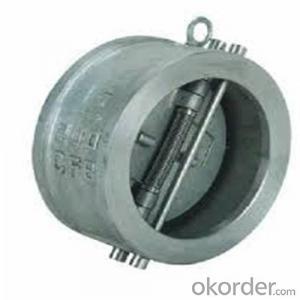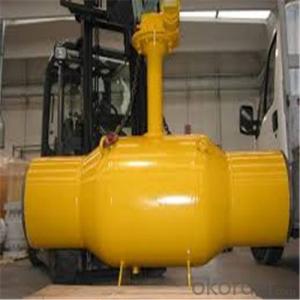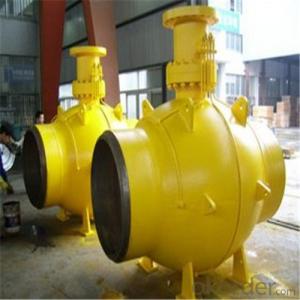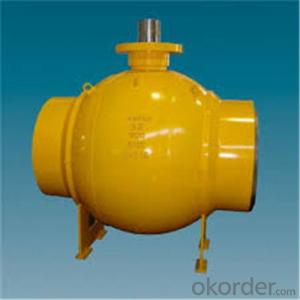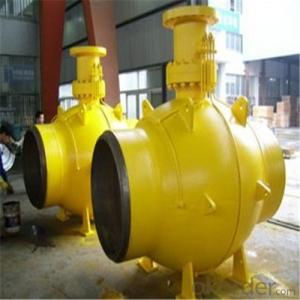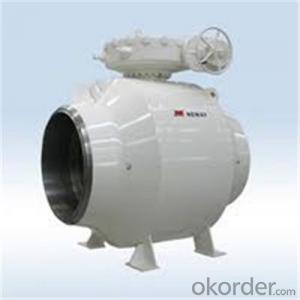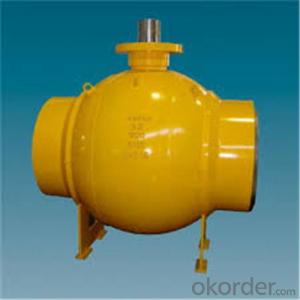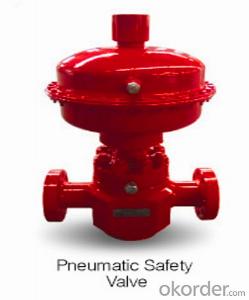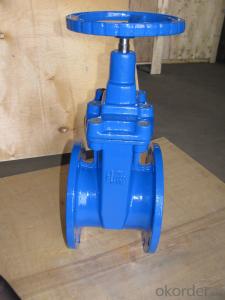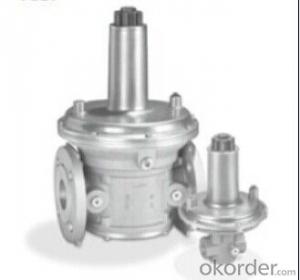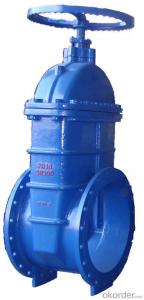Full Welded Forged Steel Ball Valve DN 28 inch
- Loading Port:
- Shanghai
- Payment Terms:
- TT OR LC
- Min Order Qty:
- 10 pc
- Supply Capability:
- 100 pc/month
OKorder Service Pledge
OKorder Financial Service
You Might Also Like
Design Features of full welded forged steel ball valve
The body of ball valve is full welded,selects high quality forged material,and adopts the advanced forged forming technology to form two semi-spheres which are welded into a whole in the middle of the body.This welding technology differentiates the ball valve form others,and makes the valve more spherically,so the valve structure is more compacter,lighter and stronger.Besides,the middle direct welding realize highly accurate valve body manufacturing,makes fully and completely sealing between the seat and ball.The full welding instead of bolts completely avoids the outside leakage,so ball valve is the ideal product for under-ground,offshore working platform and under-sea equipments.
Adopting fixed plates or trunnion to support the ball
The top and bottom of the ball is supported by upper and lower fixed plates or stem and trunnion,and the ball is accurately placed in the center of the ball valve to achieve complete seals and precise movements.When plate adopted,the force exerted by the medium to the ball is distributed via the plate to the left and right bodies,so that the stem does not bear the blending moment from the medium,but only the torque from the ball rotation during the opening/closing of the valve.The low-friction PTFE Teflon composite bearings installed between the ball axis and fixed plate and between the stem and the trunnion can absorb ball moving action caused by the pressure of the medium.This structure brings stable actions and easy operations for the ball valves,and the required operation torque can be reduced,so smaller actuators can be used,and the cost is cut down.
ball valve seat is floating structure,means the seat can move along the medium direction,so that the seat can fit against the ball all the time.
(Ⅰ)Double piston effect structure seat of full welded forged steel ball valve
Seat design is special double pistons effect structure,it can ensure the seal wherever the medium flows into the ball valve.

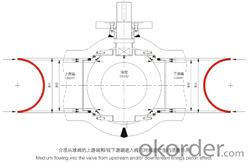
(Ⅱ)Seat multistage seal strucute of full welded forged steel ball valve
As following graphic instruction,on seat bearing ring,set two soft sealing rings(A and B)and metal sealing spherical surface which can seal with the ball.Seat ring A is spring loaded,which seals the surface with the ball tightly to the surface to form an initial seat;When there is pressure generated from medium,the piston force is generated to make seal ring A elastically deformed and seal ring B fit the surface of the ball surface due to the piston effect caused by area difference,thus the second seal forms.When the medium pressure is rising.It will generate huge pressure to seal ring A and seal ring B,so the two seals have a greater elastic deformation,then metal seal ball surface compact with ball surface to form the third level of metal to metal seal.
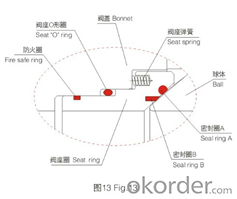
(Ⅲ)Secondary seat seal device of full welded forged steel ball valve
As the above graphic instruction,the secondary seal device(seat grease injection valve)can be chosen according to the actual working condition,medium requirement,seal requirement,etc.Seat ring grease injection valve is a one-way valve,installed on the body,which can prevent the leakage and inject grease under the outside force.When secondary seal is required,there is a grease injecting channel and hole on the seat ring.The grease can form a seal between the seat and the ball,and then stop the leakage.
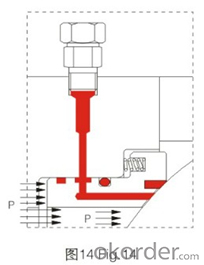
Standards Applied of full welded forged steel ball valve:
Design Standard | API 6D customize |
Connection Standard | ASME B 16.25-2007 ASME B 16.5 ASME B 31.4 ASME B 31.8 DIN GB、GB/T JB、JB/T JIS customize |
Test Standard | API 6D customize |
Face to Face | API 6D customize |
Pressure-teperature rating | ASME B 16.34-2004 customize |
Marking | MSS SP-25 customize |
FAQ of full welded forged steel ball valve:
Q1:I can’t find the type of steel check valve which I need. what can I do?
The chart above only lists out some common composition of steel check valve parts.We may provide other different parts material composition according to the customer's request or the actual valve working condition.
Q2:Which certification do your products pass?
Our products are in accordance with ISO 9001、ISO 14001、API 6A、API 6D、TS CE、API607/6FA/BS6755.
Q3:How can I place an order?
The only one thing you should do is to tell us the sepecification about type 、quantity and mode of transportation, then we will send you quotation within 24 hours.
- Q: I have a Jupiter double horn. The thumb valve will randomly stick down and not want to come back up. It however only does this when I play a scale or am in the middle of a song, so when I ask the director or an instrument repair person to help, they think I'm crazy and see nothing wrong with it. Also, the first valve is slightly bent sideways towards the second valve. I got it used and it came like this. It is not horrible, but that makes it significantly slower than the other valves and sticks a LOT. All repair shops do is take my money and claim they've fixed it when they have done nothing. It is so frustrating. What should I do? And the oil doesn't help with either of these things, which is even MORE frustrating.
- Open up the #4 valve cap and flood the top with valve oil, put the cap back on and turn the instrument over. Put valve oil in the crack where the valve comes out of the bottom of the valve case. This can be hard to see. Put some drops on every moving part of the valve action. I can remember the layout of that valve but I don't think you can shoot oil into the valve. Try all that I said above and see if that helps. Rotate and wiggle the valve between each step.
- Q: IT USUALLY TAKES 2 SECONDS TO START THE MOTOR. NOW, IT TAKES OVER 40 SECONDS AT 7 AM. IT ALMOST KILL THE BATTERY. IF YOU PARK FOR 1 HOUR, 2ND START TAKES 10 SECONDS. IS THIS HAPPENING BECAUSE THE VALVES NEEDS ADJUSTING? HOW AND WHAT IS THE EASY WAY OF VALVES TUNE-UP?
- Valve Adjustment Scooter
- Q: When using seafoam through the PCV valve. Which side contains the vacuum? From the crank case of intake manifold? The brake booster line is very difficult to access and on their site it says I can apply seafoam through the pcv valve.
- On most engines the PCV Valve is located on the valve cover. You would remove the PCV valve from the valve cover but leave it connected to the vacuum hose. Otherwise you would have a severe vacuum leak and the engine would race wildly. With the PCV valve still in place the engine would idle somewhat normally. Pour the Sea Foam directly into the PCV valve. The Sea Foam would be sucked into the PCV valve and into the intake manifold. Be careful not to over do it on the first application. If this has not been done for a few years enough gunk can be washed out of the intake manifold that it can foul the catalytic converter. I would apply the Sea Foam. Have a friend shut off the engine while the Sea Foam is added. Allow the Sea Foam to soak for several minutes and do its job. Reconnect the PCV valve. Start the engine and drive the vehicle for several miles. This will allow the catalytic converter to burn off the gunk that and Sea Foam that has passed through the engine. Repeat as necessary.
- Q: I recently converted my furnace from l.p. gas to natural gas. It's been maybe two weeks of me troubleshooting and replacing. I have a new gas valve and transformer in the furnace. There is 24v running to the valve and it clicks to open but no gas comes out. I have exhausted all my options with the mechanical/electrical components on the furnace. I have bled the valve to be sure that there was gas making it to the inlet side. Does anyone have an idea as to why the valve stopped opening once I converted it over?
- I realize this is probably a dumb question, but it has to be asked, just so everyone else won't have to wonder. Are you dead sure you put the valve on in the right direction? I'm not a certified furnace installer or repair person, so I don't actually know if it's even possible to put a valve on backwards, so, the question. It certainly sounds like you've done everything that could be done, other than to take the valve off and try getting it to open while it's off. If it's opening, it should do it on a bench, with 24 volts going to it. You may have to take the transformer with it to be sure, and actually look up in the holes to see if you can spot the flap opening up for the gas to flow. You haven't mentioned a pilot at all, so I have to wonder if this is an igniter type system? That would be my methodology of checking the valve and the transformer. If you can get it to open on the bench, then it certainly should open in place.
- Q: i have a puegeot 306 turbo diesel and apparently removing the EGR valve helps with engine noise and the smokeyness of the car. Is there any downside to removing it?
- It will throw off the computer, and cause the check engine light to come on. Other than that, no.
- Q: I have tried to adjust valves of Suzuki Intruder VS400 but they still tapping..so how to adjust them in the right way?
- You know what they say. if you cant hear the valves tapping, their doing damage! but it can be too loud. Make sure that your cylinder is at top dead center for the valve your adjusting. Then You need to know what feeler gauge is right but you probably already know. Make sure when you adjust them that they make the feeler gage drag slightly when you pull it out. If you have a twin you need to make sure that each cylinder is top dead center when you adjust the valve for it.
- Q: How do I know if the valve seals need replacing? From what type of smoke can I detect?
- A leak down test won't tell you anything about the valve stem seal. It will about the actual valve face sealing in the valve seat, but the valve is closed when performing a leak down test. The best way to diagnose worn valve stem seals is if you get a lot of oil smoke onstart up, but it goes away in a few minutes. A real giveaway on bikes is after the bike has set on the side stand overnight and when you fire it up, you get more oil smoke out of the left side muffler than on the right side muffler. That's because the oil in the valve area runs to the left side when parked on the side stand.
- Q: We have a main gas valve outside and there's a gas valve by out air condition and we want to know which way if off and on .. Does anybody know !!!
- Most valves like this can be padlocked in the off position. Look at the movable part of the valve: if there's a hole for a padlock that's lined up with a stationary hole so that it can be padlocked, the gas is off.
- Q: i have an old 79 malibu and its only got a 267 in it. I wouldnt buy new valve covers because its not worth it to me but i was thinking i could clean the ones i got up a little bit. i was thinking of painting them. What kind of paint should i use? and one other thing is the gaskets. I figure while i have them pulled off i should put new gaskets on. I read up about getting all the old stuff off but i was curious still about it. I was just looking at some average ones made of cork for 10 bucks. Do i lay the sealer downthen put the gasket on , then put the valve cover on?
- the best thing i could tell you is clean them good and when you put the gasket on dosent matter if its cork or not, but the silicon ones are better, is that to make sure that the mounting surface's are clean. and have no oil on them otherwise your gonna have a leak. as for the pain clean em good and it really dont matter which paint
- Q: what is meant by inherent characteristic for the steam control valve??
- There are different type of valves, (ball, gate, globe, needle, diaphram) each have their own characteristics in how they operate and the effect they have on flow. Inherent characteristic would be an effect that valve has on the fluid flowing through it.(steam can also be considered a fluid ) An example is a globe valve used to throttle a flow does so by adjusting the size of its opening. In essense its a variable orifice. Flow through an orifice results in a pressure drop across that orifice. So, an inherent characteristic of a globe valve is a pressure drop.
Send your message to us
Full Welded Forged Steel Ball Valve DN 28 inch
- Loading Port:
- Shanghai
- Payment Terms:
- TT OR LC
- Min Order Qty:
- 10 pc
- Supply Capability:
- 100 pc/month
OKorder Service Pledge
OKorder Financial Service
Similar products
Hot products
Hot Searches
Related keywords
